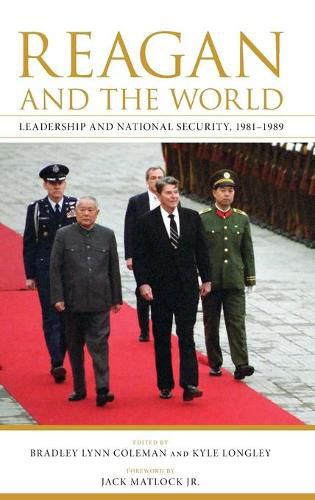Readings Newsletter
Become a Readings Member to make your shopping experience even easier.
Sign in or sign up for free!
You’re not far away from qualifying for FREE standard shipping within Australia
You’ve qualified for FREE standard shipping within Australia
The cart is loading…






This title is printed to order. This book may have been self-published. If so, we cannot guarantee the quality of the content. In the main most books will have gone through the editing process however some may not. We therefore suggest that you be aware of this before ordering this book. If in doubt check either the author or publisher’s details as we are unable to accept any returns unless they are faulty. Please contact us if you have any questions.
Throughout his presidency, Ronald Reagan sought peace through strength during an era of historic change. In the decades since, pundits and scholars have argued over the president’s legacy: some consider Reagan a charismatic and consummate leader who renewed American strength and defeated communism. To others he was an ambitious and dangerous warmonger whose presidency was plagued with mismanagement, misconduct, and foreign policy failures. The recent declassification of Reagan administration records and the availability of new Soviet documents has created an opportunity for more nuanced, complex, and compelling analyses of this pivotal period in international affairs. In Reagan and the World, leading scholars and national security professionals offer fresh interpretations of the fortieth president’s influence on American foreign policy. This collection addresses Reagan’s management of the US national security establishment as well as the influence of Secretary of Defense Caspar Weinberger and others in the administration and Congress. The contributors present in-depth explorations of US-Soviet relations and American policy toward Asia, Latin America, Europe, and the Middle East. This balanced and sophisticated examination reveals the complexity of Reagan’s foreign policy, clarifies the importance of other international actors of the period, and provides new perspectives on the final decade of the Cold War.
$9.00 standard shipping within Australia
FREE standard shipping within Australia for orders over $100.00
Express & International shipping calculated at checkout
This title is printed to order. This book may have been self-published. If so, we cannot guarantee the quality of the content. In the main most books will have gone through the editing process however some may not. We therefore suggest that you be aware of this before ordering this book. If in doubt check either the author or publisher’s details as we are unable to accept any returns unless they are faulty. Please contact us if you have any questions.
Throughout his presidency, Ronald Reagan sought peace through strength during an era of historic change. In the decades since, pundits and scholars have argued over the president’s legacy: some consider Reagan a charismatic and consummate leader who renewed American strength and defeated communism. To others he was an ambitious and dangerous warmonger whose presidency was plagued with mismanagement, misconduct, and foreign policy failures. The recent declassification of Reagan administration records and the availability of new Soviet documents has created an opportunity for more nuanced, complex, and compelling analyses of this pivotal period in international affairs. In Reagan and the World, leading scholars and national security professionals offer fresh interpretations of the fortieth president’s influence on American foreign policy. This collection addresses Reagan’s management of the US national security establishment as well as the influence of Secretary of Defense Caspar Weinberger and others in the administration and Congress. The contributors present in-depth explorations of US-Soviet relations and American policy toward Asia, Latin America, Europe, and the Middle East. This balanced and sophisticated examination reveals the complexity of Reagan’s foreign policy, clarifies the importance of other international actors of the period, and provides new perspectives on the final decade of the Cold War.